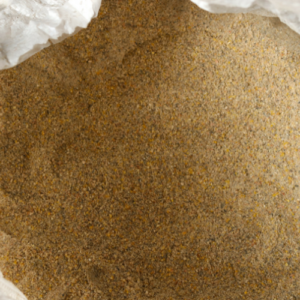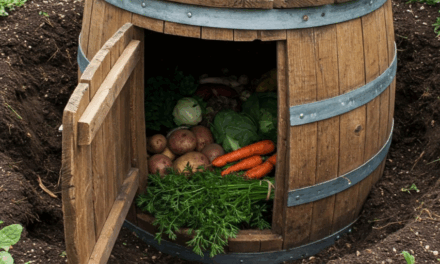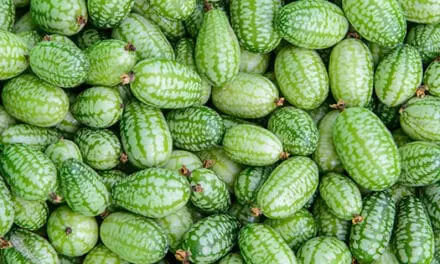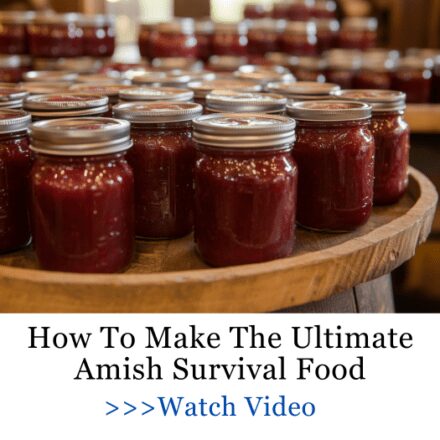An old joke when someone referred to something cheap was “That’s chicken feed.” Unfortunately, like everything else these days, even chicken feed prices have gone up. The benefit of buying chicken feed is that it’s well balanced nutritionally and ground to a size that is easy for the chickens to eat. And just to be clear, making your own feed will still cost some money, but you can beat the feed store prices. We’re also going to look at a low-cost feed option in case your budget is tight.
🐔How to Feed Chickens Without Buying Feed – Chicken Nutrition 101
On a fundamental level, chickens have a set of nutritional needs. These needs can vary. Egg layers need some added calcium in their feed to help with egg production, while boilers require more protein. We’ll identify ways to make those adjustments when we get into the recipes.
Here are the basic nutritional needs:

- Carbohydrates give chickens energy and help keep them warm in winter.
- Fat also provides energy and is especially effective for generating long-term warmth in winter.
- Protein builds muscle in all chickens and is especially important with broilers.
- Vitamins and minerals help to boost the chicken’s immune system. They need it for overall growth and development.
The question becomes where do you find food sources that satisfy these nutritional needs? Here are the basic sources:
- Kernels. This is the primary carbohydrate source. Crack whole kernels to make it easier for the chickens to peck and eat.
- Field peas. This is an excellent protein source, and they should also be cracked. However, field pies can be sprouted in a bucket of water and after 3 days added to the feed. It’s an excellent way to help a chicken recover and quickly add muscle.
- Wheat berries. Wheat gives a chicken both carbs and protein.
- Oats and barley. These are another protein source, and you can sprout the barley to add greens and extra vitamins.
 Fish meal. Dehydrated and shredded salmon is the fish of choice and not only provides protein but fats and omega-3 fatty acids to boost overall health.
Fish meal. Dehydrated and shredded salmon is the fish of choice and not only provides protein but fats and omega-3 fatty acids to boost overall health.- Mineral salts or just plain salt. And this is basically where they get their minerals.
- Flaxseed. An optional plus-up addition providing more omega-3 fatty acids.
- Kelp. This is a vitamin and mineral boost in addition to amino acids.
- Crushed eggshells. This is an excellent source of calcium so save your eggshells.
- Grit. Grit is necessary for chickens to digest their food. The grit resides in their crop where the grains are further ground up inside the chicken before it enters their digestive system.
- Oyster Shells. Another calcium source but optional if you have crushed eggshells.
 Backyard plants like echinacea, yarrow, lavender, chamomile, chicory and calendula offer numerous benefits for chickens. Echinacea supports the immune system, helping chickens fight off infections. Yarrow aids digestion, has antibacterial properties and may help with parasite control. Lavender provides a calming effect and repels pests like mites and flies. Chamomile reduces stress, supports digestion and promotes overall well-being. Chicory is rich in vitamins and beneficial for digestion, making it a great forage option. Calendula boosts immunity, reduces inflammation, and enhances egg yolk color.
Backyard plants like echinacea, yarrow, lavender, chamomile, chicory and calendula offer numerous benefits for chickens. Echinacea supports the immune system, helping chickens fight off infections. Yarrow aids digestion, has antibacterial properties and may help with parasite control. Lavender provides a calming effect and repels pests like mites and flies. Chamomile reduces stress, supports digestion and promotes overall well-being. Chicory is rich in vitamins and beneficial for digestion, making it a great forage option. Calendula boosts immunity, reduces inflammation, and enhances egg yolk color.
These plants can be offered fresh, dried, or even brewed into tea for drinking water, making them a natural and easy way to support a healthy flock. I found this Medicinal Garden Kit that makes it easy to grow some of the best herbs for chickens – and for me too. It comes with non-GMO seeds for all of the plants I mentioned earlier – a powerhouse mix of of hardy and easy-to-grow herbs, with incredible benefits. I love that it also includes a free guide on how to grow and use them.
We’ll highlight two recipe combinations. One is a premium mix that will cost a little more and one is a simpler more economical mix.
🐔What to Feed Chickens Naturally – A Word About Grinding and Cracking
Whole grains and peas make things harder for a chicken. The corn should be cracked and the peas and other grains very coarsely ground.

Look at the size and consistency of ingredients in any commercial feed you buy and try to approximate that size. You can use specialized corn crackers or grain grinders, but even a blender or food processor will let you cut your grains down to size.
Getting the right feed consistency isn’t just about making it easier to eat. It also helps prevent health issues. Grains that are too whole or hard to digest can lead to impacted crops, digestive troubles, or even malnutrition if your chickens aren’t absorbing what they need. An unbalanced diet can weaken their immune system, making them more vulnerable to illnesses. Keeping an eye on their diet is one of the best ways to keep your flock healthy and thriving.
That’s why the Amish, for example, take such a careful approach to feeding and caring for their livestock. Their methods focus on providing the right balance of nutrition, using all-natural remedies, and keeping their chickens healthy without unnecessary interventions. I came across a book that dives into all of these traditional practices. It covers practical ways to raise strong, resilient animals, and also many remedies that will help you care for the sick and weaker ones.
The book is not just for livestock, but for all aspects of Amish living. It covers natural remedies, traditional off-grid projects, long-lasting recipes and so much more! If you’d also like to get it, I will leave you the link right here. For a limited time only, you will also receive 3 free bonuses with your purchase, so don’t miss out on it!
🐔Organic Chicken Feed – The Premium Recipe
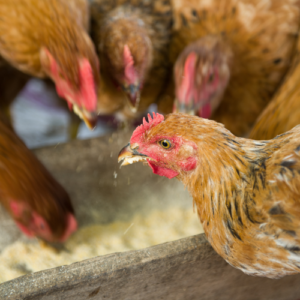
This is a robust mix of multiple ingredients. It includes the following in these proportions:
- 8 pounds of cracked corn
- 8 pounds of cracked field peas
- 6 pounds of wheat berries
- 1 pound of oats
- 1 ounce of salmon fish meal
 1 ounce of flaxseed
1 ounce of flaxseed- 1 ounce of mineral salts or plain salt
- 1 ounce of kelp
- ½ cup of grit
- ½ cup of crushed eggshells
- ½ cup crushed oyster shells
Blend everything together in a large bin using your hands or a paddle and place the lid on the bin until it’s time to feed.
If you’re looking for a simple way to keep your flock’s feed fresh and reduce waste, I also came across a book that shows you how to build a DIY chicken feeder for your backyard. It’s a practical project that ensures your chickens always have access to feed, without the mess of constantly refilling bowls. The guide is also packed with many more backyard projects that can make life a little easier and more sustainable around the homestead.
🐔Make Your Own Chicken Feed – The Economical Recipe
If you can’t assemble all of the ingredients or can’t afford them, here’s a basic recipe that will still keep your chickens going and growing:
- 8 pounds of Wheat berries

- 8 pounds of Field peas
- 1 pound of Oats
- 1 pound of Sunflower seeds or sesame seeds
- ½ cup of Grit
- ½ cup Crushed eggshells
- 8 pounds of Cracked Corn (in winter)
All grains and peas should also be cracked or coarsely ground and blended together.
🐔High Protein Chicken Feed – The Insect Option
Chickens love bugs. When they’re foraging in the run or free ranging, that is a primary target for these relatives of dinosaurs. In actual fact, chickens are distant cousins of Tyrannosaurus Rex. They’re not vegetarians.
The great things about insects is that they are an excellent protein source and should be seriously considered if you’re raising boilers. Here are some insect option:
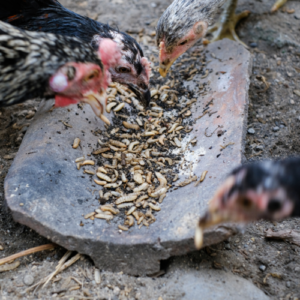
Mealworms. You can raise mealworms easily and they reproduce rapidly. You can dry them and add them to the feed or cast them about the run. Better yet, put them in a large feeding tray and the chickens in the coop or the run will quickly find them.
There’s also an interesting variation on composting called vermicomposting. It’s uses red worms to breakdown organic matter in a compost heap. The worms reproduce rapidly and prodigiously. Harvest your red worms from time to time and feed them to your chickens the same way you feed them meal worms.
Related: Worm-Farm: The Most Profitable Farm Per Square Metre
It’s also easy to raise crickets. You need to put them in a sealed jar and suffocate them first or they’ll hope away. Put them in a bowl or feed tray or cast them on the ground.
The Flying Insect Zapper Trick
If you have ever seen one of those ultraviolet light bug zappers you can use them to feed your chickens. Remove the bottom of the zapper so any zapped bugs fall to the ground and hang it high in the chicken run. They’ll get used to coming out in the morning to see what kind of bug treats the zapper left on the ground over the night.
🐔How to Prepare and Test Your Chicken Feed – See How They Feed
The best test of any recipe is if it gets eaten. Watch how well your chickens feed on your recipes. If they seem disinterested, toss some live meal worms into the feeding trays and that might stimulate their appetite. Or try a different blend of ingredients or proportions. Hopefully in time you’ll master the craft of making your own chicken feed.
Frequently Asked Questions About Homemade Chicken Feed
1. How much food should I feed my chickens per day?
On average, adult chickens should be fed around 1/4 to 1/3 pound (about 100-150 grams) of food per day. This amount can vary depending on the breed, age, and the availability of other food sources like pasture or foraging. Adjust the amount based on whether they are free-range or confined, and always monitor their weight and egg production to ensure they’re getting enough nutrition.
2. Can I feed chickens kitchen scraps?
Yes, chickens can eat a variety of kitchen scraps like vegetable peels, fruit, bread and even pasta. However, they need a balanced diet for proper health. Kitchen scraps should be paired with other natural feed sources like grains, seeds and greens to provide all essential nutrients.
3. Can I feed chickens potato peelings?
Yes, chickens can eat potato peelings, but only if they are cooked. Raw potato peelings, especially from green potatoes, contain solanine. This is a toxic substance that can harm your chickens. If you want to feed potato peelings, make sure they are cooked thoroughly to eliminate any harmful toxins.
4. Can I feed chickens oats?
Yes, chickens can eat oats! Oats are a great source of carbohydrates and fiber, making them a good addition to their diet. You can feed them whole or rolled oats. However, just like with any food, it’s important to feed oats in moderation. Too much of any one thing can lead to imbalances, so it’s best to offer them as a treat or supplement to their regular diet, rather than a main food source.
5. Can I feed chickens meat?
Yes, chickens can eat meat, including cooked chicken, beef or fish. However, it should be offered in moderation and cooked properly to avoid any risk of foodborne illness. Avoid giving them processed meats like sausage or anything with additives. Too much meat can disrupt their digestion and overall balance.
6. Can I feed chickens apples and other fruits?
Yes, chickens can eat apples and other fruits like berries, watermelon, bananas, and grapes. Fruits are a great treat for chickens, providing them with vitamins and moisture. Just be sure to remove any seeds or pits from fruits like apples and cherries, as they can be toxic in large amounts.
7. Can you feed chickens egg shells?
Yes, you can feed chickens egg shells! In fact, it’s a great way to provide them with extra calcium, which is important for strong eggshells. To feed them egg shells, simply crush the shells into small pieces and mix them into their feed or scatter them in their coop. Just make sure they are thoroughly dried and crushed to prevent the chickens from associating them with their own eggs.
8. How do you feed oyster shells to chickens?
Oyster shells are a great source of calcium for chickens, especially for laying hens. You can feed them oyster shells by offering them in a separate dish, allowing chickens to eat as much as they need. It’s important not to mix oyster shells directly into their regular feed, as some chickens may not need the extra calcium, and it’s better for them to eat it freely when necessary.
9. What to feed chickens for orange yolks?
If you want to get those vibrant orange yolks, feed your chickens a diet rich in beta-carotene. This can be achieved by providing them with foods like corn, carrots, sweet potatoes and greens. Calendula is also a great option for enhancing the color of your chickens’ yolks. It contains carotenoids, which can help produce those rich, orange yolks.
10. What can you not feed chickens?
There are several foods you should avoid feeding chickens. First, avocado contains persin, which is toxic to chickens, and should never be given to them. Raw potatoes, especially the green ones, contain solanine, which is harmful to chickens, so it’s best to avoid them. Onions can cause anemia if fed in large amounts, and while small amounts may not be harmful, it’s best to limit them. Garlic should also be avoided as it may affect the health of your chickens and the taste of their eggs. Additionally, you should never feed your chickens caffeinated drinks or alcohol, as these can be toxic. Lastly, moldy or spoiled food should always be kept away from your chickens, as it can lead to foodborne illness. Always research any new food you want to feed your chickens to ensure it’s safe for them.
Top 6 Best Egg-Laying Chicken Breeds
The Only Plant That Will Make Your Poultry Lay More Eggs Than Usual (Video)

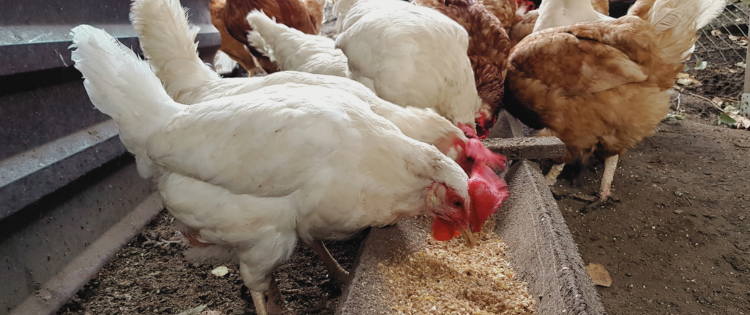
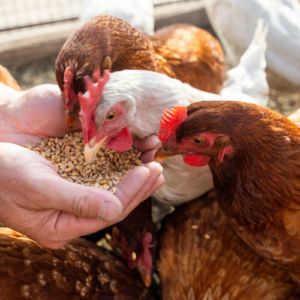 Fish meal. Dehydrated and shredded salmon is the fish of choice and not only provides protein but fats and omega-3 fatty acids to boost overall health.
Fish meal. Dehydrated and shredded salmon is the fish of choice and not only provides protein but fats and omega-3 fatty acids to boost overall health.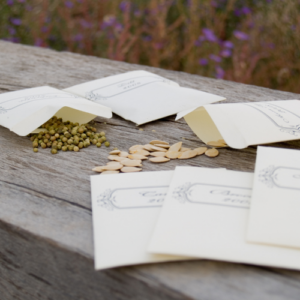 Backyard plants like echinacea, yarrow, lavender, chamomile, chicory and calendula offer numerous benefits for chickens. Echinacea supports the immune system, helping chickens fight off infections. Yarrow aids digestion, has antibacterial properties and may help with parasite control. Lavender provides a calming effect and repels pests like mites and flies. Chamomile reduces stress, supports digestion and promotes overall well-being. Chicory is rich in vitamins and beneficial for digestion, making it a great forage option. Calendula boosts immunity, reduces inflammation, and enhances egg yolk color.
Backyard plants like echinacea, yarrow, lavender, chamomile, chicory and calendula offer numerous benefits for chickens. Echinacea supports the immune system, helping chickens fight off infections. Yarrow aids digestion, has antibacterial properties and may help with parasite control. Lavender provides a calming effect and repels pests like mites and flies. Chamomile reduces stress, supports digestion and promotes overall well-being. Chicory is rich in vitamins and beneficial for digestion, making it a great forage option. Calendula boosts immunity, reduces inflammation, and enhances egg yolk color.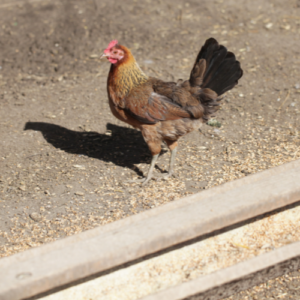 1 ounce of flaxseed
1 ounce of flaxseed